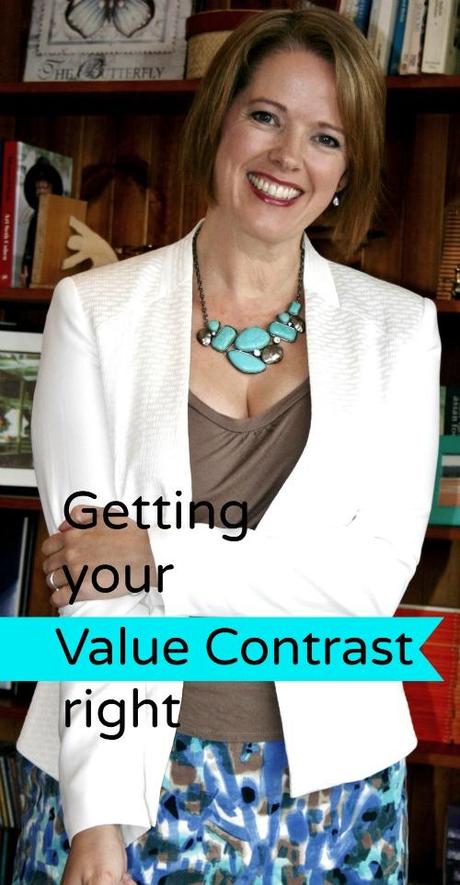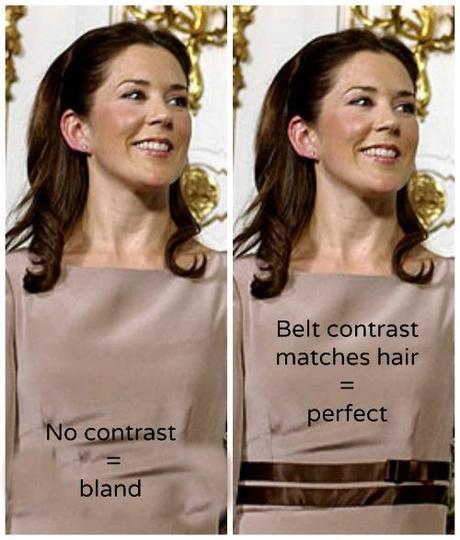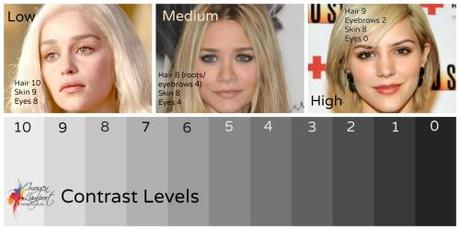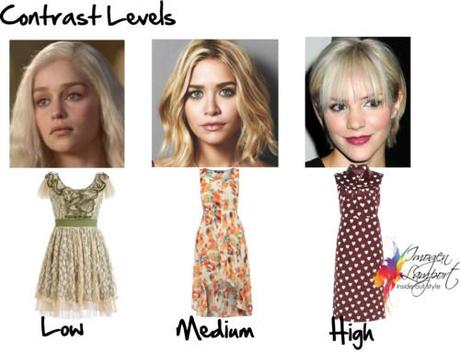
Since I’ve dyed my hair blonde, I’ve lost some of my contrast. I used to have a high contrast, but now I’m just medium in contrast. I’m learning to not automatically reach for my high contrast outfits of the past, but instead I have to rethink everything I wear (and I can tell you it’s taking me way longer to get dressed at the moment as I start creating new outfits in a medium contrast with my existing clothes).
One of the comments I’ve heard many times is that it’s hard to wear ‘nude’ types of beige pinks. I’m here to tell you it’s not. The trick is to work with your natural level of contrast.


When you think about breaking down your features into a gray scale (if you can’t imagine yourself in black and white, turn a photo of yourself into black and white using an app), and then notice the difference (the greatest difference is most important) between the Lightest and Darkest features on and around your face – hair, skin, eyes and sometimes eyebrows (if they are different from your hair or skin).
Here I’ve chosen three blondes who have different contrast levels. From low to high. These three would dress differently based on contrast levels alone.
Harmony is what we’re looking for. So a high contrast looks best in light and dark colours together, whilst a low contrast in all light, or all medium, or all dark together.

You can see in the picture above that when the contrast level is reminicent of the personal colouring, the garment looks most harmonious. Imagine the dress on the right on the low contrast colouring – it just doesn’t work as well.
If you want to wear both light and dark together, and you don’t naturally have high contrast colouring, then you need to wear a combination of light, medium and dark colours together, as illustrated here below.

Getting your value contrast right gives you greater freedom to play with color. It’s easier to wear less flattering colours, if you’re wearing the right contrast levels.
If you have high contrast colouring (as I used to do), you need to create contrast in your outfits, even with a piece of jewellery, a hint of cami, or with your garments or pattern. If you have lower contrast, you will look so much better steering away from high contrast (particularly patterns) and opting to harmonize with your natural contrast level.

